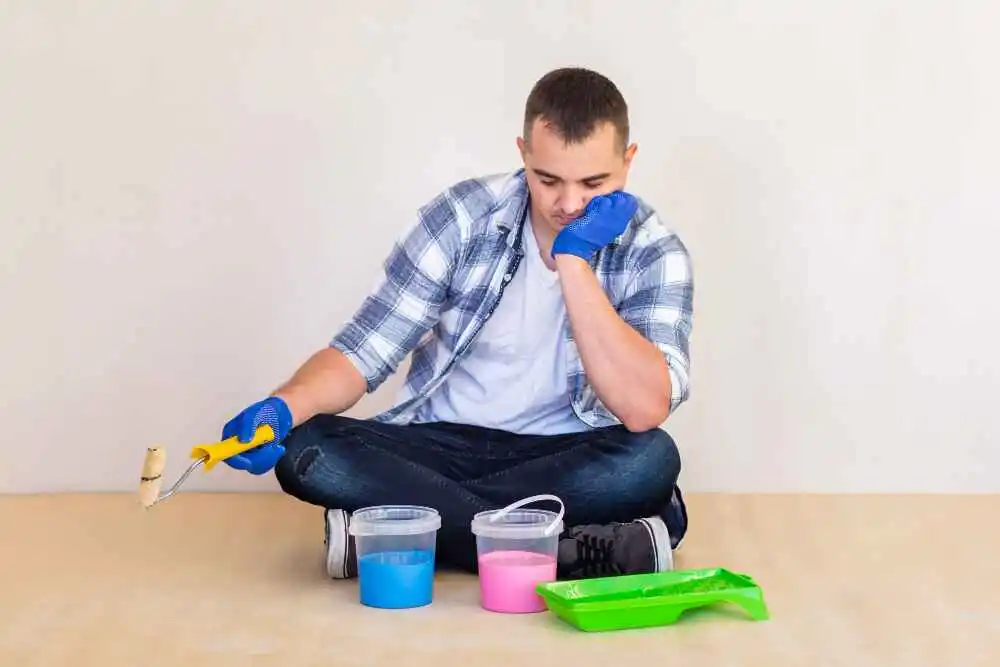How Long Does Paint Take to Dry? All Your Drying Time Questions Answered

The dry time of paint also depends on the different types such as latex dries within an hour as compared to the oil-based ones that dry after 6 to 8 hours. Nevertheless, it may last up to 30 days as opposed to curing when drying takes place.
This involves the kind of paints to be used, their thickness, the type of surface and humidity and temperature. Always look at the instruction on the label by the manufacturer and pass some time before a second coat or touch the surface.
Understanding Paint Dry Times: Dry to the Touch vs. Dry for Recoating
What “Dry to the Touch” Means
This implies that the vehicle will become touch dry. But the underlying layers are soft; they have not settled down. It is not time to use the second coat or wash the surface.
“Dry for Recoating”: When to Apply the Next Coat
These imply that the first layer has already dried up, hence another coat can be added. Recoating too soon can lead to peeling or streaking. Look at the label on the paint, but it is typically past 24 hours with latex paint.
The Crucial Difference: What is Paint Curing?
From Drying to Curing: The Chemical Process
Drying is a process in which water or solvent evaporates off the surface of paint. Curing is further, in which the molecules of paint are completely bonded utilizing hardening. This may take days or in pain, depending on the types and conditions.
Why Full Curing Time Matters for Durability
The scrub-resistant, scuff-proof cured paint allows stains and damage due to cleaning. Applying or scrubbing paint, not even after curing, may destroy the finish. Let the paint dry completely for a fresh and vibrant state of your paint job.
Key Factors Influencing Paint Drying and Curing Times
Temperature: The Goldilocks Zone for Drying
Temperature is a very large factor in the speed of drying of paint; the ideal range is most often 50°F to 80°F (10°C to 30 ºC). In the case of being too cold, paint will take so long to dry, and it may not be adhesive. It could be too warm to the extent that it dries up very fast, such that the paint crackles or peels off. The temperature that is printed on the can the paint should always be taken note of.
Humidity Levels: The Moisture Factor
The existence of moisture in the air through humidity eliminates drying. When the conditions are extremely humid, the paint may actually take several hours to dry, and even when dry, it may be too sticky. In order to match the best drying environment, make an effort to paint when the humidity is below 50 percent. The desiccated air helps in the setting and drying of the paint uniformly.
Ventilation: Letting the Air Circulate
New air enables the quick drying of paint by removing moisture from the room. When you are painting inside the house, leave the windows open or use fans ot bring in good air circulation. Damp air may get trapped in poorly ventilated areas, and he or she may end up taking a long time to dry with the possibility of an irregular finish.
Paint Type and Formula (Latex, Oil-Based, Specialty)
Application Thickness: Thicker Coats = Longer Dry Times
Speed of drying also depends on the thickness of the paint being put on. They take more time than usual (and are longer), since the layer of paint is extra-moist. one should be avoided in favour of two or three thin and lasting coats. A think layer of coating take less time to dry-out and dries evenly.
Practical Tips to Optimize Paint Drying and Curing
Ensure Adequate Air Circulation
A major factor that helps in drying is the good air flow. Your windows should be open and fans used to circulate fresh air. This assists it to dry off the air moisture and settling to distribute the paints.
Control Room Temperature and Humidity
The optimum temperature is 50 Degree F to 85 Degree F and low humidity. Too wet; incorporate a dehumidifier; too cold; incorporate a heater. Having a constant condition within the environment helps in drying and curing the paint.
Apply Thin, Even Coats Consistently
Try to apply thin coats rather than heavy coats. Heavy paints have a massive viscosity that dries slowly, thus becoming uneven and having drips. A thin layer of coating dry faster and easy to recoat for sencond one.
Avoid Painting in Unfavorable Conditions
Do not go for painting when it is raining and during high-temperature days. The drying process may be destroyed by poor weather conditions and making the paints fragile. Wait till a better day or treat your inside situation before beginning.
When Can You Safely Use Your Freshly Painted Surfaces?
Light Use & Gentle Touching
A majority of the paint becomes dry in 1-2 hours. At this point, it is still okay to touch the surface or open up windows and doors without destroying them. Nevertheless, make sure to avoid walls and leaning on them or objects directly against the walls.
Replacing Outlets, Fixtures, and Light Furniture
Refitting a light fitting, switch boards, and small furniture may start after 24-48 hours. The only thing is to be cautious not to scrape or rub on the painted surface. Never pick up and put back things harshly so that there are dents and scratches.
Heavy Furniture Placement & Thorough Cleaning
Thick furniture, rugs, and deep cleaning must wait 7 days or until cured through and through. Curing makes the paints robust so that it is not affected by marks, dents, and water. Rather early can damage the finish or leave streaks.
Common Paint Drying Problems and How to Troubleshoot Them
Paint Still Tacky After Days/Weeks
In case your paint seems to be sticky even days after you’ve applied it, then it could be too humid or too cold. It might also be by way of paint used might have been applied lubriciously, or the preparation of the surface might have been bad. To cure this, open up the air, increase the room temperature, or use a fan or a dehumidifier so that it can dry.
Uneven Drying or Patchiness
Uneven or irregular drying commonly occurs due to an uneven application of the paint, as well as some coats going on too early. This may also be caused by poor surface preparations or variations in the roller pressure. It must always be cleaned and primed, should be painted with an even coating, and the drying time should be as indicated on the paint can.
Wrinkling or Cracking
The thick paint dries on the surface yet remains wet under the skin, which creates wrinkles and cracks. This tends to occur when too much application of coats is done or when it is done at a high speed. To rectify the same, rub the surface smooth with some sand, paint with a very thin coat, and make sure there is a complete drying period between the coats.
